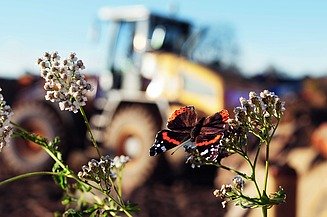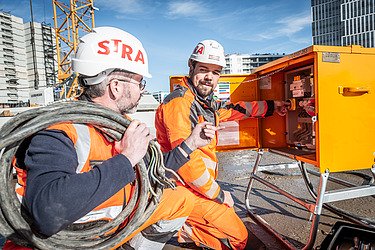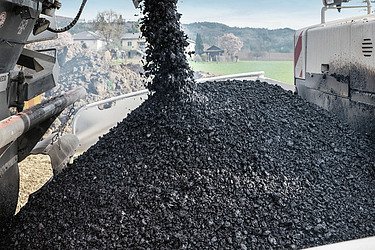Biodiversity
Biodiversity is a crucial element of our planet's natural systems, providing essential ecosystem services. The loss of biodiversity has increased significantly in recent years. Over 90 % of this is due to the following five main factors: Soil degradation & habitat destruction, resource exploitation, climate crisis, pollution and invasive species.

Biodiversity management in the construction industry
The construction industry has a significant impact on biodiversity and ecosystems. The effects are particularly evident along the upstream value chain - especially in the extraction of raw materials to produce building materials. In addition, areas are converted and sealed during construction projects. This demonstrates a significant challenge for flora, fauna and fungi.
The good news is that the construction industry also has many opportunities to make a positive contribution. Through sustainable planning and targeted renaturalisation measures, new habitats for flora, fauna and fungi are created. In addition, innovative approaches help to protect natural ecosystems and promote biodiversity in the long term.
Projects and measures to protect our ecosystems
The establishment of a Group-wide biodiversity management system was launched in 2024. As part of the project, the status quo is being analysed to consolidate existing biodiversity measures within the Group. Measures are to be developed on this basis. Another focus of the project is to introduce suitable measurement parameters and establish a appropriate monitoring system.
We are already implementing the following measures in the area of biodiversity:
- At our own extraction sites, we implement measures to minimise our ecological footprint and renaturalise areas. To this end, we liaise closely with local authorities and interest groups. This includes the creation of biotopes and the commissioning of regular ecological assessments. This can then result in the land-saving utilisation of the area in order to avoid unnecessary interventions in nature.
- Certain construction projects are subject to legal and regulatory requirements for which environmental impact assessments (EIAs) must be carried out. This ensures that potential environmental impacts are identified in the planning and design phase and that suitable protective and compensatory measures are implemented. This approach is also used in Group countries outside the European Union, for example through environmental impact assessments for certain construction projects.
- In the field of transport infrastructure construction in Germany, STRABAG pursues a sustainable construction site concept in line with the German Sustainable Building Council (DGNB). As part of the certification process, biodiversity criteria are considered for construction sites with a duration of more than three months. Biodiversity-promoting measures, such as the use of environmentally friendly technologies and processes, the minimisation of surface sealing and consideration for local flora, fauna and fungi must be observed.
These efforts are key components of our strategy. By involving all relevant internal and external stakeholders, we ensure that our measures are effective in the long term and contribute to our biodiversity goals.
Downloads

Biodiversity Position Statement

